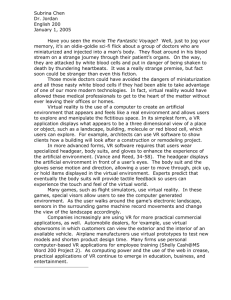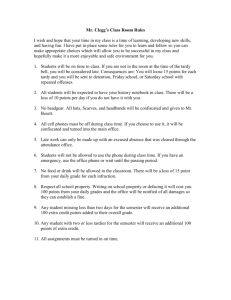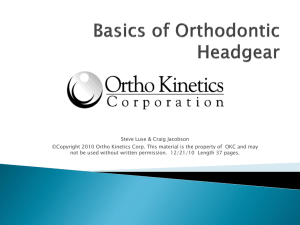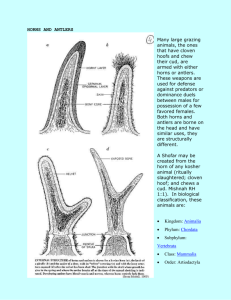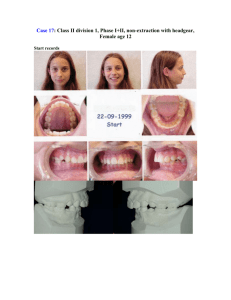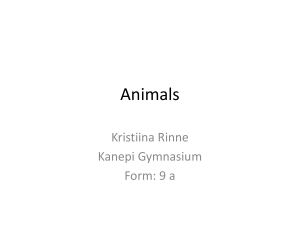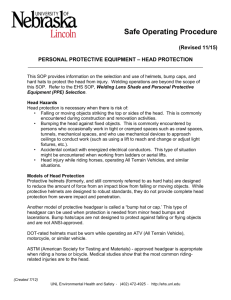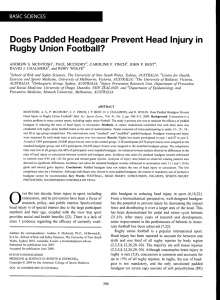173-Aug-Headgear - Deer Industry Association of Australia
advertisement
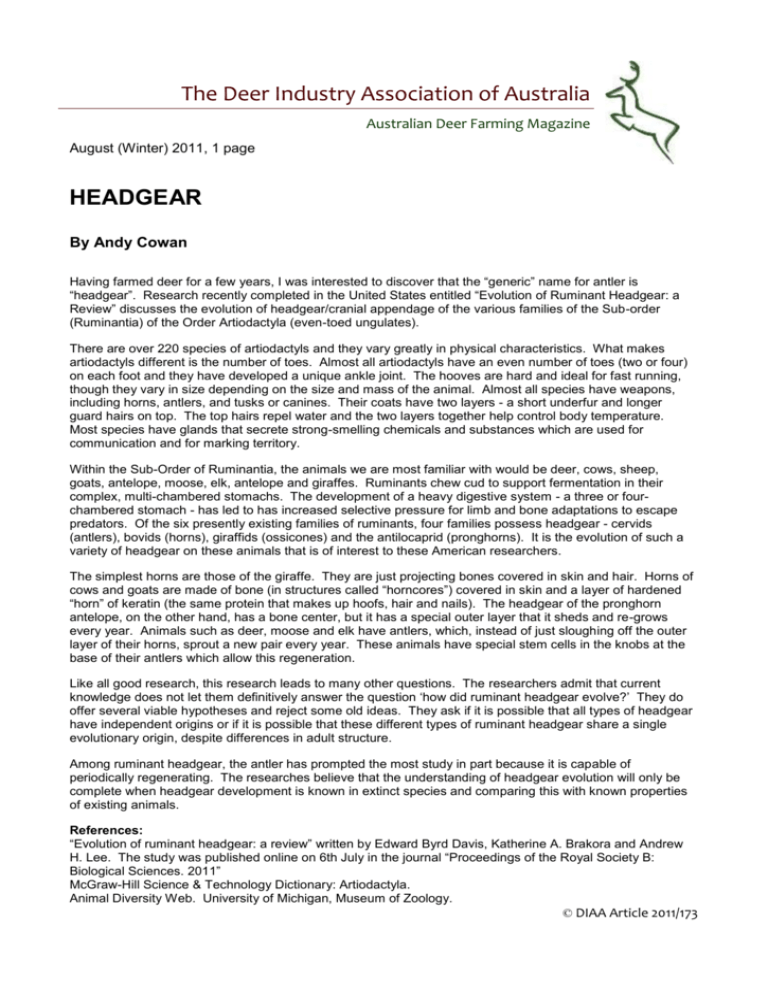
The Deer Industry Association of Australia Australian Deer Farming Magazine August (Winter) 2011, 1 page HEADGEAR By Andy Cowan Having farmed deer for a few years, I was interested to discover that the “generic” name for antler is “headgear”. Research recently completed in the United States entitled “Evolution of Ruminant Headgear: a Review” discusses the evolution of headgear/cranial appendage of the various families of the Sub-order (Ruminantia) of the Order Artiodactyla (even-toed ungulates). There are over 220 species of artiodactyls and they vary greatly in physical characteristics. What makes artiodactyls different is the number of toes. Almost all artiodactyls have an even number of toes (two or four) on each foot and they have developed a unique ankle joint. The hooves are hard and ideal for fast running, though they vary in size depending on the size and mass of the animal. Almost all species have weapons, including horns, antlers, and tusks or canines. Their coats have two layers - a short underfur and longer guard hairs on top. The top hairs repel water and the two layers together help control body temperature. Most species have glands that secrete strong-smelling chemicals and substances which are used for communication and for marking territory. Within the Sub-Order of Ruminantia, the animals we are most familiar with would be deer, cows, sheep, goats, antelope, moose, elk, antelope and giraffes. Ruminants chew cud to support fermentation in their complex, multi-chambered stomachs. The development of a heavy digestive system - a three or fourchambered stomach - has led to has increased selective pressure for limb and bone adaptations to escape predators. Of the six presently existing families of ruminants, four families possess headgear - cervids (antlers), bovids (horns), giraffids (ossicones) and the antilocaprid (pronghorns). It is the evolution of such a variety of headgear on these animals that is of interest to these American researchers. The simplest horns are those of the giraffe. They are just projecting bones covered in skin and hair. Horns of cows and goats are made of bone (in structures called “horncores”) covered in skin and a layer of hardened “horn” of keratin (the same protein that makes up hoofs, hair and nails). The headgear of the pronghorn antelope, on the other hand, has a bone center, but it has a special outer layer that it sheds and re-grows every year. Animals such as deer, moose and elk have antlers, which, instead of just sloughing off the outer layer of their horns, sprout a new pair every year. These animals have special stem cells in the knobs at the base of their antlers which allow this regeneration. Like all good research, this research leads to many other questions. The researchers admit that current knowledge does not let them definitively answer the question ‘how did ruminant headgear evolve?’ They do offer several viable hypotheses and reject some old ideas. They ask if it is possible that all types of headgear have independent origins or if it is possible that these different types of ruminant headgear share a single evolutionary origin, despite differences in adult structure. Among ruminant headgear, the antler has prompted the most study in part because it is capable of periodically regenerating. The researches believe that the understanding of headgear evolution will only be complete when headgear development is known in extinct species and comparing this with known properties of existing animals. References: “Evolution of ruminant headgear: a review” written by Edward Byrd Davis, Katherine A. Brakora and Andrew H. Lee. The study was published online on 6th July in the journal “Proceedings of the Royal Society B: Biological Sciences. 2011” McGraw-Hill Science & Technology Dictionary: Artiodactyla. Animal Diversity Web. University of Michigan, Museum of Zoology. © DIAA Article 2011/173
